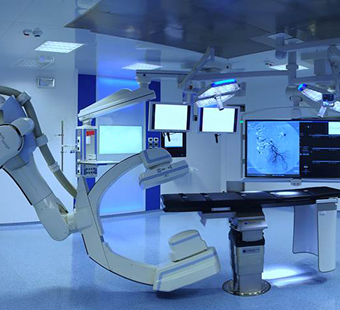Before and after photos serve a critical role in the medical field, documenting the outcomes of dental procedures and med spa treatments. These photographic records not only help practitioners assess the effectiveness of their work but also provide patients with clear, visual documentation of their progress. However, the management and sharing of these sensitive images must comply with HIPAA regulations to protect patient privacy.
At RxPhoto, we provide photo software that meets HIPAA standards. Our software helps medical professionals nationwide manage their medical photography with confidence, knowing their practices are supported by compliant technology.
Medical Photography in Healthcare
Photo software supports a range of uses, from clinical documentation to patient consultations and treatment planning. Accurate medical photography can enhance the communication between healthcare providers and patients, offering visual evidence that supports diagnoses and tracks treatment progress. It also promotes research and education, where consistent and clear images can illuminate complex medical conditions and the effects of treatments over time.
The Importance of HIPAA Compliance
Compliance with HIPAA is a foundational aspect of managing medical photography. This regulatory framework safeguards patient information, ensuring that all medical images are handled with confidentiality and security. By adhering to these regulations, healthcare providers mitigate the risk of data breaches, which can have serious legal and reputational consequences. Adherence to HIPAA not only protects patients but also reinforces the integrity of medical practices by maintaining rigorous standards for privacy and data protection.
Understanding HIPAA Regulations for Photography
What Is Protected Health Information?
Protected Health Information (PHI), as defined by HIPAA, comprises any data in a medical record that could identify a person and which originates, is utilized, or disclosed during healthcare service provision. This category also covers visual information handled by apps for before and after photos, which may display unique identifying features of a patient.
Rules on Use and Disclosure
The rules regulating the use and disclosure of medical images are stringent. Access to images through a photo login must be controlled and monitored to ensure that it complies with HIPAA guidelines. Healthcare providers must ensure that such images are only used for the purposes specified in the scope of consent, such as treatment, healthcare operations, or other outlined exceptions unless additional patient consent is obtained.
Consent and Authorization Forms
For a healthcare provider to legally use images generated by a before and after picture maker, explicit consent and authorization forms must be obtained from the patient. These forms detail how the images will be used, who will have access, and the rights of the patients regarding their own medical photographs. These forms must be comprehensive and clear to avoid any unauthorized use or exposure of patient images.
Choosing the Right Photo Management Software
- Essential Features for Compliance: Photo RX platforms must include features like access controls and secure storage options to comply with HIPAA regulations. These features monitor who views the medical photos and how these photos are managed over time.
- Encryption and Data Protection: Photo management software needs to incorporate strong encryption methods both for stored data and during transmission. This ensures that any intercepted data remains unreadable to unauthorized parties, safeguarding patient information effectively.
- Integration With EMR Systems: Seamless integration with electronic medical records (EMR) systems is a functional requirement for medical photography software. This integration facilitates the smooth transfer of images into the patient’s health records, enhancing both clinical efficiency and data consistency.
Compliance Steps for Using Medical Photo Software
Managing Permissions and Access
Effective management of permissions and access is a foundational step in utilizing photo software for medical purposes. It involves setting user-specific access levels that dictate who can view, edit, or share medical photographs. This controlled access minimizes the risk of unauthorized data exposure.
Ensuring Data Is Encrypted in Transit and at Rest
To protect patient privacy, data encryption is necessary both in transit and at rest. Using a before and after app that encrypts data ensures that all patient information remains secure against potential breaches.
Regular Compliance Audits
Conducting regular compliance audits is a critical practice for users of RxPhoto software. These audits help verify that the software usage complies with HIPAA regulations and that all data security measures are being properly implemented and followed.
Training Staff on Secure Usage Practices
Training healthcare staff on secure usage practices of photo management software is crucial for maintaining compliance. This training should cover the proper handling of patient data, understanding of privacy policies, and emergency procedures for potential data breaches. Well-informed staff are essential in ensuring the secure and effective use of medical photography software.
Special Considerations for Dental Practices
Unique Aspects of Dental Photography
Dental photography captures detailed aspects of oral health that are crucial for diagnosis and treatment planning. Dental photography focuses on a small anatomical area, requiring specific lighting and angle considerations to accurately depict the oral cavity’s condition.
Privacy Concerns in Orthodontic and Dental Before and After Photos
Privacy in orthodontic before and after photos is a significant concern due to the identifiable nature of the images. Special care must be taken to ensure that these photos, often used for patient education and treatment progression, are securely stored and shared in compliance with HIPAA regulations to protect patient confidentiality.
Dental Case Documentation and HIPAA
Maintaining HIPAA compliance in dental before and after documentation requires meticulous management of patient records. Dental practices must ensure that all photographic records are treated with the same level of confidentiality and security as other types of Protected Health Information, including secure storage and controlled access to prevent unauthorized data breaches.
Ensure Compliance in Your Medical Imaging Practices
Efficient photo software is integral to maintaining HIPAA compliance and enhancing the clarity and utility of medical and dental photographs. At RxPhoto, we offer solutions that meet the needs of healthcare providers across the nation, ensuring that patient documentation is secure and accessible. To learn more about how we can assist your practice, please contact us through our online form or call us at (617) 307-6562.
How much should you spend on medical photography equipment?Without a doubt, your office needs to take photos of your patients on a daily basis. Whether you’re building a before and…
Ever wonder why you call your clients “patients”? Turns out, the etymology of the word stems from a Latin word that means “enduring, or suffering, without complaint”. And this quiet…
Before and after photos, as well as photos used to document patient procedures are considered PHI (Protected Health Information) by HIPAA, regardless of whether or not clients are using health…



